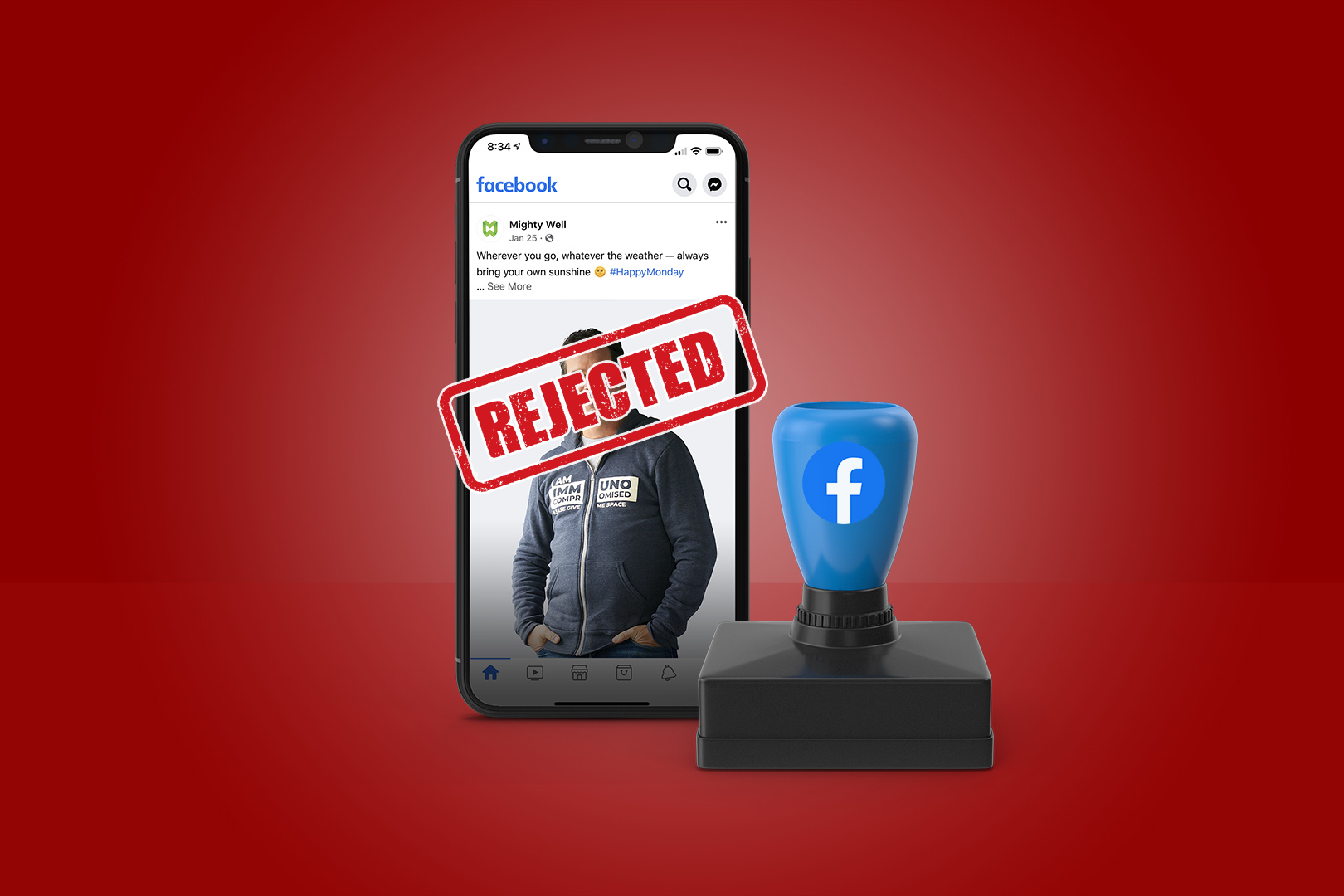Recently the New York Times ran a story about a new adaptive clothing company that had its ad blocked from Facebook, even though it didn’t violate the policies Facebook said it did. Although in the end the issue was resolved, it got us thinking about ads we’ve placed on Facebook on behalf of clients, and hoops we’ve occasionally had to jump through to get them accepted by the platform.
Have you ever had problems with Facebook’s marketing platform? Have you wondered why your seemingly non-controversial Facebook ads have been rejected? We’ve looked into some of the recent issues that brands have faced, especially with the iOS14 update.
Is Facebook rejecting more ads?
In the case of the above story, the photo in their ad was for a popular sweatshirt, but Facebook’s algorithm flagged it for promoting “medical and health care products and services including medical devices.” And they aren’t the only adaptive clothing brand that has run into this problem.
From a non-AI standpoint, it’s easy to see where the automated algorithm Facebook has made a mistake. Yes, these mistakes have always occurred, which is why Facebook allows you to appeal the rejection to have it reviewed by another party. The difference in rejections now is that the algorithm seems to be checking things more thoroughly, and including a longer list of why you can be rejected.
One of the reasons for this can be traced to the iOS14 update, and the subsequent changes that were made to Facebook Ads Manager to work with that Apple update. If Facebook is being held to stricter standards, reason would follow that they are upping their standards for others, and being quicker to act on the flagged items.
How can you avoid Facebook ad rejection?
One of the downsides of how Facebook rejections work is that they don’t give very specific feedback. Yes, they may tell you what part of their rules you violated, but they don’t tell you what part of your ad violated those rules. So it can feel like a guessing game when you’re trying to avoid future rejections.
For our clients, we always advise following the known rules as closely as possible. One of the simplest things to start with is to read Facebook’s ad policies thoroughly before starting any strategy or advertising plans.
Ask yourself some of the following questions:
- What topics about my company could trigger ad rejection?
- Are there images we use, or products we feature, that could trigger ad rejection?
- Is our account set up correctly (including verifying domain and setting up two-factor authentication)?
Understanding where your sore spots could be can help with strategizing how to say what you want without wasting time creating marketing materials you can’t use.
What can you do if your Facebook ads are rejected?
As a digital agency, we have created and posted ads within many different business sectors. From our experience, there is no 100% way to guarantee your ad will not be rejected, simply because the AI used to judge them is completely capable of making mistakes. Just like it did with the clothing brand in the NYT story. Just as important as mitigating ad rejection is having steps in place if rejection occurs.
The first step is typically to appeal to get your current ad running. Check your account for the message from Facebook first. Reaching out to a Facebook representative is the most ideal way to appeal. If you don’t have someone to reach out to, Facebook chat can also help you start an appeal process.
Through the appeal process you will typically learn more details about what caused the ad rejection. If it isn’t approved as-is, you’ll be able to pinpoint what needs to be changed for the ad to be accepted.
After finding out what needs to be changed, the next step is deciding what to do about it. It may be an easy fix, or it may be more strategic to use a different ad altogether. This can come down to budget and timing as well. How you proceed with a new or altered ad is all up to what choice will best support your brand and marketing targets. And like any other marketing or advertising out there, learning from mistakes can help further avoid ad rejection in the future.
